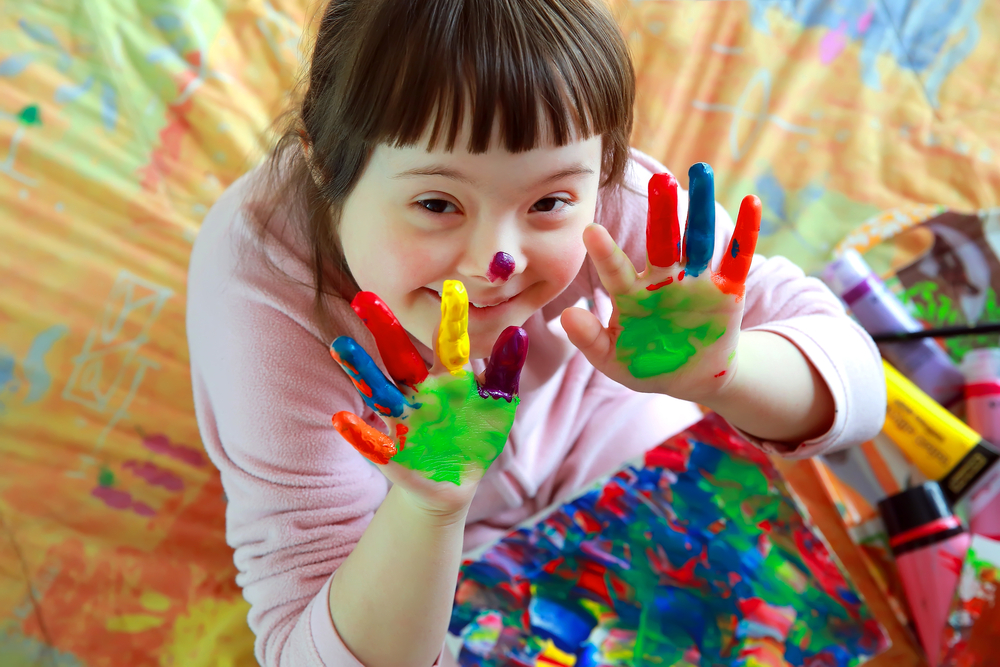- Combatting sexualised violence against children and youth
- Going mainstream: how young people’s perspectives can consistently be taken into account in the EU
- Combatting child poverty: a European child guarantee
- Youth policy in the EU: "What does the EU do for me?"
- Protect children’s rights in the digital space
- Support young carers
- Prevent child poverty and social exclusion
Combatting sexualised violence against children and youth
Sexualised violence against children and youth is steadily increasing. In 2023 alone, there were 1.3 million reports of sexualised violence against children and youth in the EU, including more than 3.4 million Child Sexual Abuse Material (CSAM). It is estimated that one in five children in Europe is affected by sexualised violence. Between 70 and 85 percent of those affected know the perpetrator.To mark the European Day for the Protection of Children against Sexual Exploitation and Sexual Violence on 18 November 2025, we have published a series of publications on the topic of "Combatting sexualised violence against children and youth in Europe".
This includes an Expertise presenting existing and planned EU measures to combat and prevent (digital) sexualised violence against children and youth. A comprehensive Overview (in German) presents criminal and family law provisions for protecting children and youth from online and offline sexualised violence in five EU Member States (Germany, France, Ireland, Sweden, and Spain). An accompanying Dossier provides a concise explanation of all aspects of the Europe-wide fight against and prevention of (digital) sexualised violence.
Protect children’s rights in the digital space
Since the adoption of the UN Convention on the Rights of the Child in 1989, society has changed in many ways. Digitalisation creates the need to extend the protection of children and their rights to the digital space. This goal has been increasingly pursued in recent years at the international, European and national levels. In March 2021, the UN Committee on the Rights of the Child published a general comment on children’s rights in the digital environment. The comment is intended to demonstrate the relevance of the Convention on the Rights of the Child in the digital space as well as to support states in protecting and fulfilling children’s rights in the digital environment. The comment was preceded by a two-year consultation involving more than 700 children.Going mainstream: how young people’s perspectives can consistently be taken into account in the EU
With the introduction of the European Commission’s Youth Test from 2025 onwards, the concept of Youth Mainstreaming is moving further into the spotlight to better integrate young people's perspectives at the EU level. The Dossier addresses these topics from an intersectional perspective.
First, the Observatory presents the concept of Youth Mainstreaming and other measures that can promote the integration of youth perspectives. Second, in his contribution, Giorgi Davidovi (Verian Group) illustrates youth-centred policies in the EU. Third, the interview with Carmen Tanasie (ERGO Network) and Amir Alibabić (EDF) focuses on the intersectional inclusion of young people in European processes. Demands are formulated on how the needs, opinions, and perspectives of young Roma and young people with disabilities can be better taken into account. Last, the Observatory summarises the three most important insights of the Dossier on Youth Mainstreaming.
Youth policy in the EU: "What does the EU do for me?"
Climate change, technological and demographic trends, political instability and Russia’s war of aggression in Ukraine are changing society and democratic interactions. In our interconnected world, many young people are concerned with these global issues and are looking for solutions for a sustainable society. At the same time, too little attention and consideration are given to young people at the political level.
With youth policy initiatives like the European Year of Youth 2022, the European Union aims to involve young people and their priorities more in policymaking and to open up new opportunities for them.
Combatting child poverty: a European child guarantee
Child poverty is widespread in Europe, even in economically strong countries. One in four children in the European Union is at risk of poverty and social exclusion. The coronavirus pandemic and the Russian invasion of Ukraine have exacerbated existing inequalities even further.In March 2021, the European Commission adopted the European Pillar of Social Rights Action Plan, which aims to reduce the number of children at risk of poverty and social exclusion in the European Union by at least five million by 2030. To achieve this, an integrated approach is needed that focuses on the causes of poverty and social exclusion, and that breaks the intergenerational cycle of poverty.
On 14 June 2021, the EU Member States adopted a Council recommendation establishing a European Child Guarantee. It aims to prevent and combat the social exclusion of children in need by guaranteeing access to different key services, e.g. early childhood education and care, education, healthcare or healthy nutrition and adequate housing. The European Commission has called on the EU Member States to establish a national action plan covering the period until 2030 to implement the European Child Guarantee.
Prevent child poverty and social exclusion
The topic of child poverty ranges high on the political agenda of many European states. However, despite sometimes far-reaching efforts on part of the state, children are affected by poverty more often than the general population. The financial support for children and families varies between European states regarding the amount of the benefit. Often universal benefits stand next to targeted benefits.Besides the question what children and their families need in addition to financial benefits, another important question is how to generate an easy access to any form of benefits for children and their families. Against the background of the processes initiated at EU-level and national level, the Observatory shows different approaches to tackle child poverty and social exclusion and promotes the Europe-wide exchange.
Support young carers
For more of the Observatory's work on the topic, see our Equal Care focus page.















